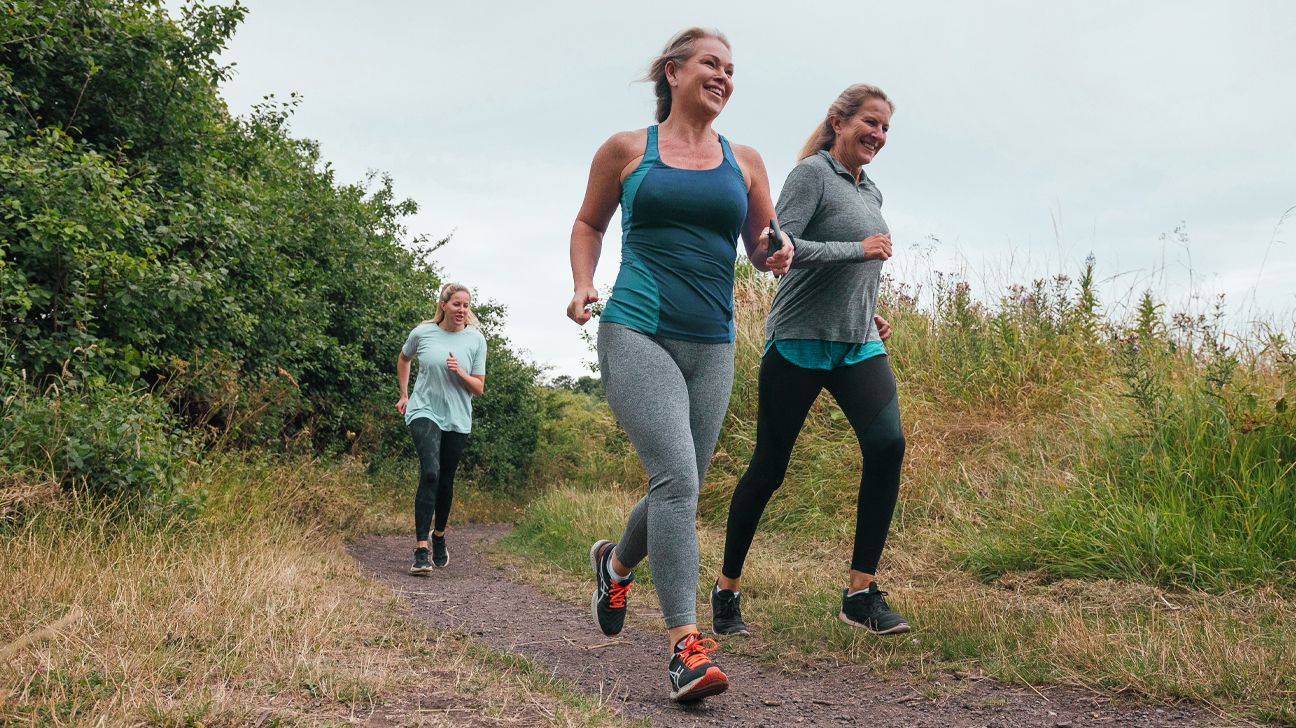
- A type of lipid called BMPs is present in higher amounts in the tissues of older mice and muscles of older people.
- Lipids are a group of molecules that include fats, waxes, and others that play a number of roles in the body, and are sometimes linked to disease.
- A short exercise program reduced the levels of BMPs in the muscle tissue of older women, suggesting a possible way to undo the effects of aging.
Scientists have long known that regular physical activity can support healthy aging by reducing the risk of chronic diseases and improving daily functioning.
A new study published Apr. 12 in
This biomarker is a type of lipid called bis(monoacylglycero)phosphates (or BMPs). Lipids are a group of molecules that include fats, waxes, phospholipids like BMPs, and others.
In addition to showing that the levels of BMPs increased with age, researchers found that a brief exercise program reduced this type of molecule in the muscles of older women.
Alexandra Stolzing, PhD, a professor at Loughborough University in Leicestershire, United Kingdom, called the comprehensive analysis of lipids conducted in the new study “noteworthy.”
Stolzing was not involved in the study.
However, she told Healthline that “without further studies including health markers, the potential impact of BMP reduction on health and fitness levels remains uncertain.”
The researchers said in a release that they plan to conduct follow-up studies to better understand how BMPs contribute to aging, and whether exercise or other interventions can affect the levels of BMPs long-term.
Lipids play a number of roles in the body. They form part of your cell membranes, store and transport energy, help your body absorb fats and vitamins, and are used to make hormones.
However, when certain lipids are present in high amounts, it can increase your risk of disease. For example, high blood levels of triglycerides and LDL cholesterol — both lipids — increase the risk of heart attack and stroke.
Similarly, BMPs have been
To see how the levels of BMPs changed with age, the authors of the new study examined 10 different tissues in mice, including muscles, kidneys, liver and heart. BMPs were present in higher amounts in those tissues in older mice.
Researchers also looked at muscle biopsies collected previously from people, including younger and older males and females. As with mice, the levels of BMPs were higher in older people.
To see if exercise could change these levels in people, researchers recruited 26 middle-aged or older women to take part in three different movement programs, each 4 days long:
- Sitting 14 hours per day
- Exercising for 1 hour and sitting for 13 hours per day
- Sitting 9 hours, standing for 3 hours, and walking for 2 hours per day.
Muscle biopsies taken from the women showed that the levels of BMPs were lower after the exercise program, compared to the sitting program. Levels were also lower after the standing/walking program, but not as much as after 4 days of exercise.
Douglas Vaughan, MD, director of the Potocsnak Longevity Institute at Northwestern University Feinberg School of Medicine in Chicago, pointed out that metabolism changes as we age, and BMPs represent a molecular marker for those changes.
Vaughan was not involved in the study.
While he couldn’t say whether BMPs are a better biomarker for aging than other categories of molecules, he said the study showed that the results were “consistent across species, which makes it perhaps more relevant.”
In addition, “the fact that they demonstrated that an exercise intervention program lowered levels in women suggest that this might be one of the things that we could look at as we try to think about slowing or reversing aging in our species,” he told Healthline.
The new research is still in the early stages, but Vaughan said in order to test drugs or other methods for slowing aging, reliable biomarkers will be needed. This includes different types of molecules that change across tissues.
“You might choose something like [BMPs] to be part of the signature that you’re looking at when determining whether or not your intervention had a positive or negative effect [on aging],” he said.
It could be some time before scientists fully unravel how exercise supports healthy aging, but Vaughan emphasized that population-based studies have already shown that people who are more active tend to live longer, healthier lives.
Still, it is useful to dig deeper.
“Understanding the different aspects of this is definitely valuable in terms of thinking about how we might develop other interventions that could mimic exercise and its effects on aging,” Vaughan said.
Researchers examined several tissues from mice and muscle tissue from people, and found that a certain type of lipid, called BMPs, was present in higher amounts in older mice and people.
BMPs have been linked to a number of diseases, including metabolic diseases, cancer, liver and kidney diseases, and neurodegenerative diseases related to aging.
Researchers also found that a 4-day exercise program reduced the levels of BMPs in the muscles of older women, suggesting a possible way to slow the effects of aging.
